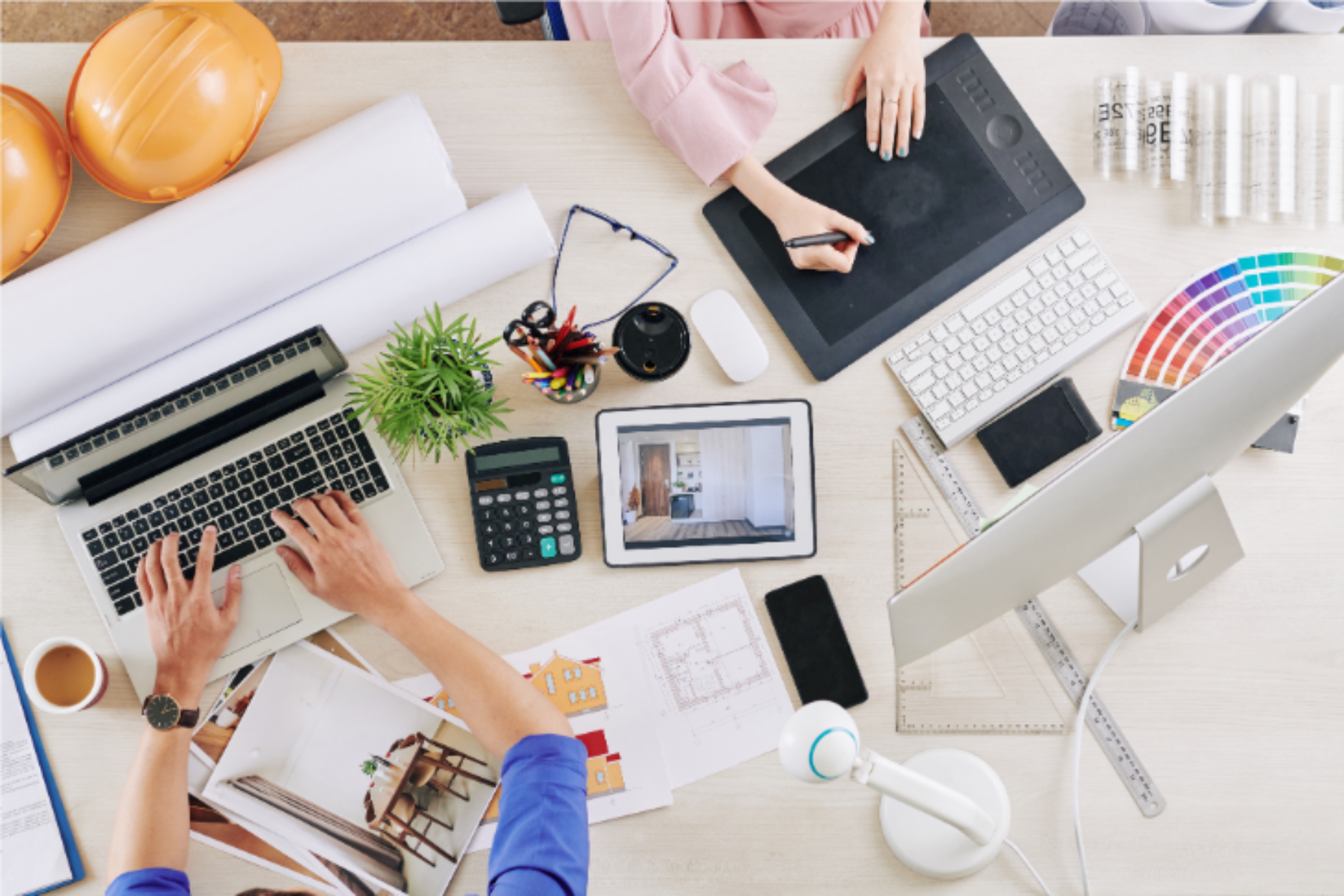
Technology is the catalyst that propels interior design into a realm of infinite possibilities.
Interior design has long been a fascinating profession because it combines artistic expression with practical considerations to produce visually arresting results. This sector has been on the cutting edge of development because it has responded quickly to consumer demands for new services.
Interior design has undergone a sea change as a result of the digital revolution and the emergence of cutting-edge technologies. Technology, especially in the form of virtual reality (VR), augmented reality (AR), and AI-powered design suggestion systems, is now the primary force behind these shifts in interior design.
Read also: Interior Design: 6 Ways Twinn HQ Fuels Purposeful & Goal-Driven Spaces
Here are five ways in which you can leverage cutting-edge tools and technologies to create endless possibilities.
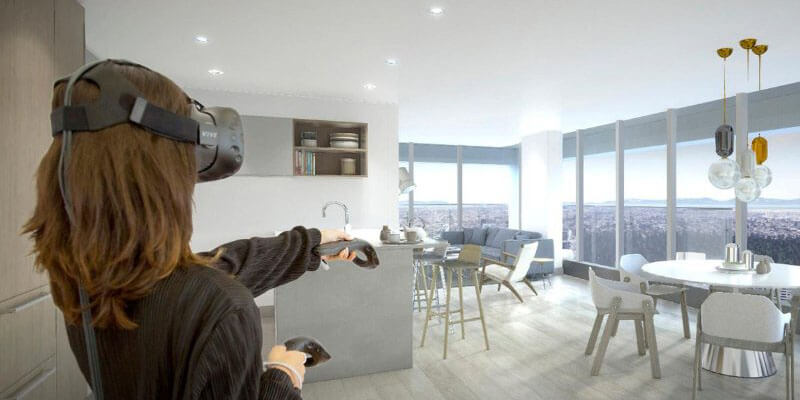
Virtual Reality and Augmented Reality (VR/AR) offer immersive experiences that revolutionize the way spaces are explored and visualized.
The advent of VR has made it possible to construct fully immersive digital worlds in which you can get a walkthrough of spaces.
Virtual reality (VR) allows users to enter simulated environments and interact with them as if they were there. Allow your imagination to run wild as you explore spaces, try on various decor options, and bring your designs to reality.
As a designer, VR allows you to experiment with various layouts, colors, materials, and furniture configurations, giving you complete control over your design vision.
How?
Imagine being able to virtually apply various textures, fabrics, and finishes to surfaces with just a few clicks. Now you can provide clients with a visual representation of how different materials look in their space.
Whether it's envisioning the warmth of hardwood floors, the softness of plush carpets, or the elegance of marble countertops, you can bring these design elements to life virtually. With this level of realism, you can make informed decisions and ensure that the final design meets expectations.
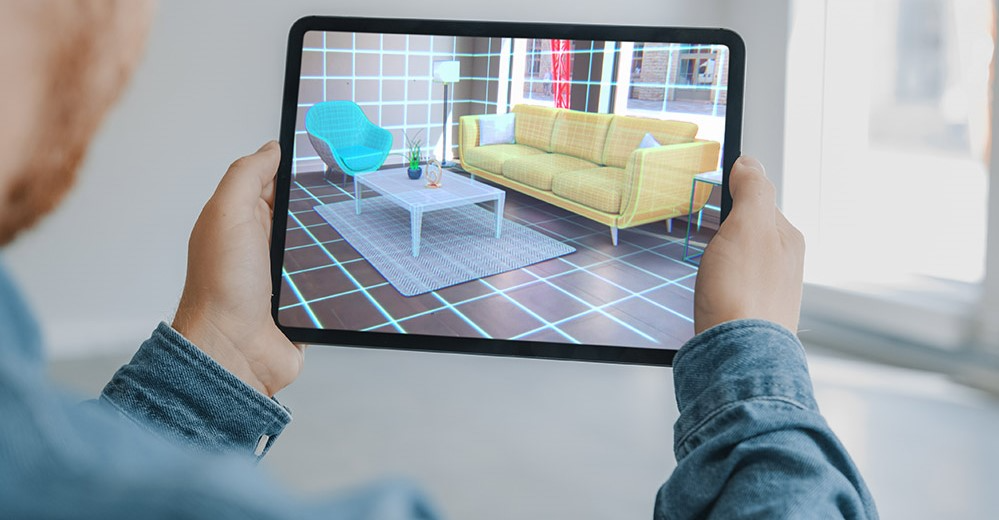
Augmented Reality (AR) takes your design journey to a whole new level by overlaying virtual objects in your real-world environment. AR brings your design concepts to life and offers your clients an incredible preview of how the final design will look in their actual space.
With AR, you can experience the perfect sense of scale and proportion as you walk around and see how different pieces fit and complement the existing elements. It's like having a personal design assistant right at your fingertips, helping you make informed decisions about furniture placement and bringing your vision to life.
Augmented Reality isn't just about visualizing pre-designed objects; it's also about customization. You have the power to modify attributes like colors, finishes, and sizes of virtual objects in real-time. This means you can explore endless design options and personalize your space according to your unique preferences.
Artificial intelligence (AI) is revolutionizing the interior design industry by offering personalized recommendations, streamlining the design process, and enhancing creativity.
Let’s explore how.
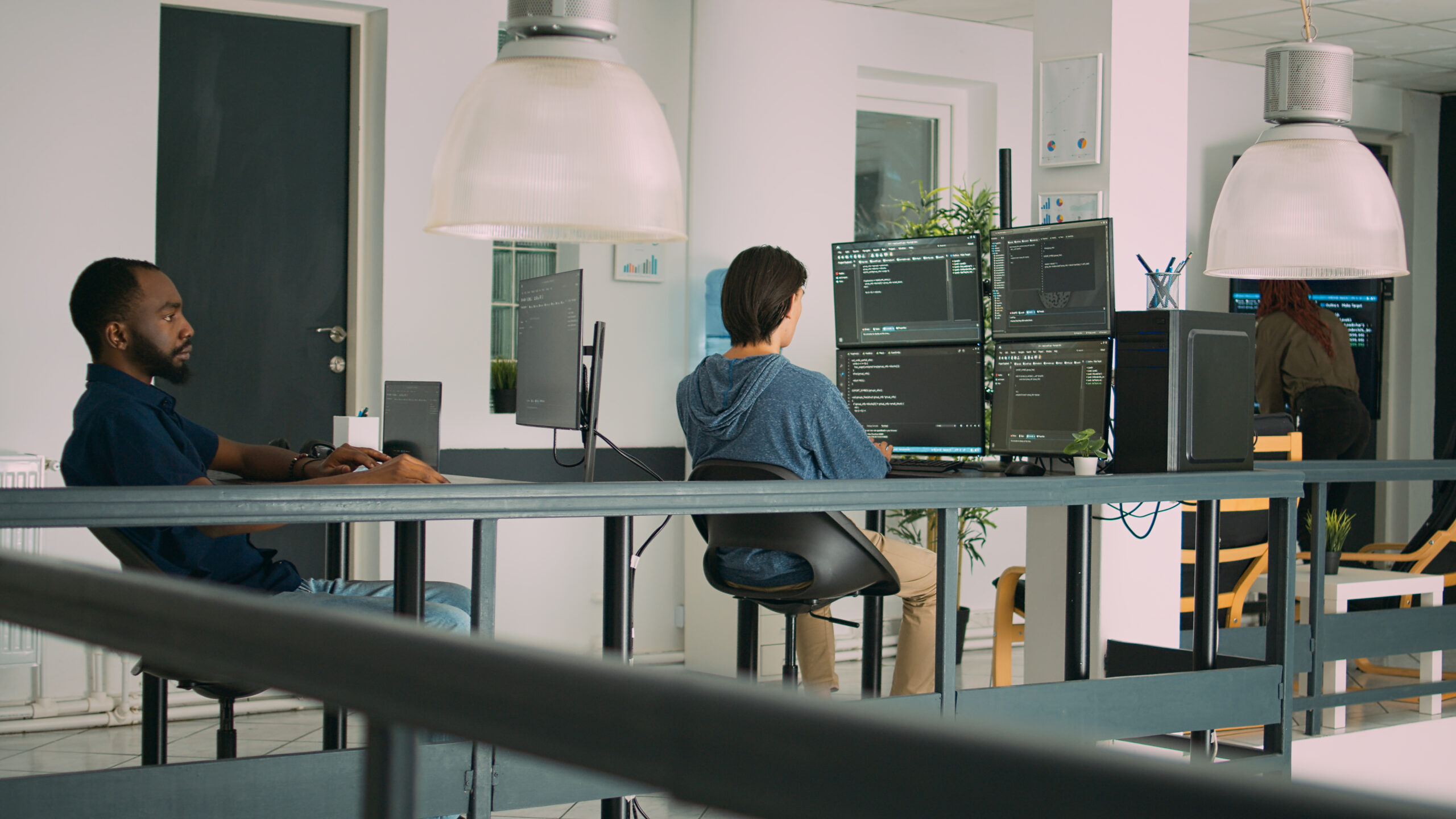
AI-powered design recommendation systems analyze vast amounts of data, including design trends, user preferences, and style profiles, and generate personalized design suggestions tailored to individual clients.
By analyzing your client’s past choices, social media activity, and personal interests, the system generates design suggestions aligning with the client’s unique style, ensuring a truly personalized experience. Not only this, you, as a designer, can now incorporate the latest styles and aesthetics in your designs with AI recommendation systems monitoring the latest developments and providing recommendations.
Now don’t fret about searching for the perfect materials and products!
AI-powered design recommendation systems analyze vast databases of products, materials, and suppliers, and provide you with curated options that match your project requirements. Focus on creativity more and less on logistics.
What’s more?
AI algorithms can also analyze design parameters such as space layout, color schemes, and furniture arrangements to generate intelligent design suggestions.
AI presents you with a wide range of design references and inspirations, encouraging exploration and helping you discover new ideas and possibilities. It can also evaluate design proposals and provide feedback based on design principles, spatial considerations, and user preferences.
Have you ever faced the problem of inefficient collaboration which delays project timelines and hampers the successful execution of projects?
Online design collaboration tools like TwinnHQ, Foyr, and Design Manager are software platforms specific to interior design that promote efficient teamwork and streamline communication.
They provide many features achieving the aforementioned, such as:
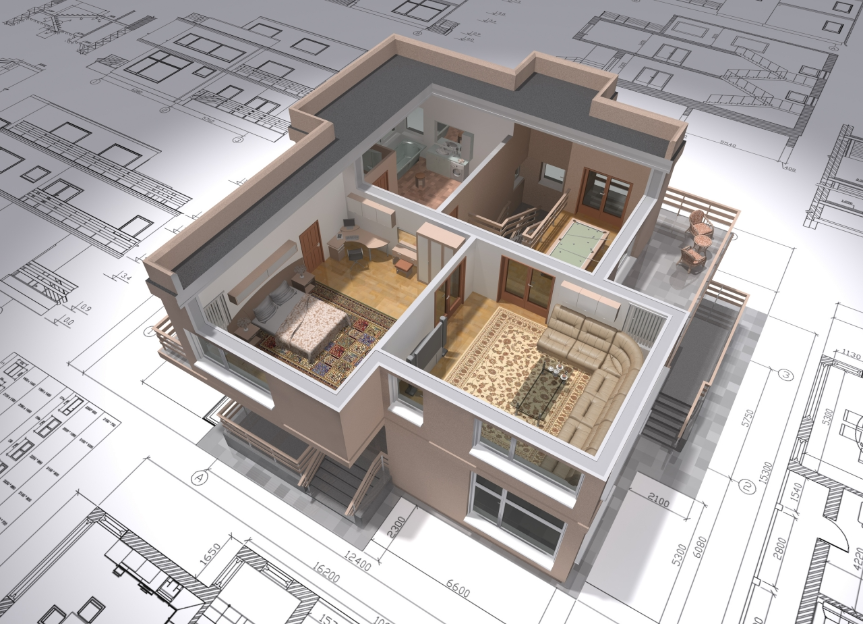
Building Information Modelling (BIM) is a technology-driven approach that can revolutionize your sustainable interior design practices in the interior design industry. Using BIM, you can make 3D digital representations of real-world structures, which improves communication and planning.
Here are some ways in which BIM might aid your eco-friendly building plans:
One of the key advantages of BIM is its ability to integrate architectural, structural, and mechanical, electrical, and plumbing (MEP) systems into a cohesive model. This integration enables interior design professionals to assess the energy efficiency and environmental impact of the building at the early stages of the design process. By analyzing the interactions between various building systems, you can identify opportunities for optimizing energy consumption, reducing carbon emissions, and minimizing the overall environmental footprint.
BIM goes beyond the initial design phase and provides tools for evaluating the performance of a building over its entire lifecycle. With BIM, you can simulate and analyze different scenarios to assess the long-term environmental impacts of design decisions. By considering factors such as energy consumption, material usage, and waste generation, you can identify strategies to improve the building's sustainability, reduce operational costs, and enhance occupant comfort.
BIM seamlessly integrates with smart building technologies, allowing real-time monitoring and optimization of energy consumption. By connecting BIM models with sensors and data analysis systems, you can monitor energy usage, indoor air quality, and other environmental factors. This data-driven approach enables you to identify inefficiencies, implement energy-saving measures, and continuously improve the building's performance throughout its operational life.
BIM facilitates multidisciplinary collaboration among architects, engineers, contractors, and other stakeholders involved in the design and construction process. By working on a shared BIM model, all parties can contribute their expertise, share information, and make informed decisions regarding sustainable design strategies. This collaborative approach ensures that sustainability considerations are embedded in every aspect of the project, leading to more holistic and environmentally conscious design solutions.
Embracing BIM as part of your sustainable interior design toolkit can lead to greener buildings, reduced environmental impact, and a more sustainable future for the interior design industry.
IoT (Internet of Things) technology offers several benefits to interior designers, enhancing their interior design process and the overall functionality of their creations.
Here’s how:
With IoT technology, interior designers can effortlessly connect and control various devices and appliances in their smart interiors. This connectivity enables centralized management of lighting, thermostats, security systems, and other smart devices. This streamlined control enhances convenience, efficiency, and the overall user experience within the designed space.
IoT devices excel in creating personalized experiences for occupants. By leveraging smart technology, you can design spaces that adapt to individual preferences and needs. For example, smart lighting systems can learn user preferences and automatically adjust brightness, color temperature, and ambiance based on occupant preferences or time of day. This level of customization enhances occupant satisfaction, comfort, and overall well-being.
IoT technology empowers interior designers to track and analyze energy consumption within a space. By integrating IoT-enabled sensors and meters, you can gather real-time data on energy usage, monitor patterns, and identify areas for optimization. This data-driven approach allows you to make informed decisions to optimize energy efficiency, reduce wastage, and promote sustainable design practices.
IoT technology offers a range of smart devices that enhance safety and security within interior spaces. Smart cameras, motion sensors, and door/window sensors can be integrated into a central IoT system, providing real-time monitoring and alerts. This connectivity enables remote access and control, allowing designers and occupants to monitor their spaces, receive notifications, and even control security features remotely.
By integrating IoT into your design projects, you can elevate the user experience, promote sustainable design practices, and stay at the forefront of technological advancements in the interior design industry.
The future of interior design is filled with exciting possibilities, thanks to the powerful innovations that are reshaping the industry. From virtual reality and augmented reality for immersive design exploration to AI-powered design recommendation systems, online collaboration tools, building information modeling (BIM) for sustainable design, and IoT integration in smart interiors, these innovations are revolutionizing the way designers conceptualize, create, and interact with spaces.
As interior designers embrace these innovations, they open up new avenues for creativity, efficiency, and sustainability. Clients can now experience designs before they come to life, personalized recommendations can enhance design outcomes, and sustainable practices can be seamlessly integrated into the design process. The future of interior design is dynamic, transformative, and full of opportunities to create stunning, functional, and sustainable spaces.
As we conclude this journey through the realm of Immersive 3D and its profound impact on the interior décor landscape, we invite you to step boldly into the future. Embrace the power of Twinn Vision, where the fusion of technology and design crafts an experience that transcends the ordinary and paves the way for a more immersive, intuitive, and inspiring world of decor.
By staying at the forefront of these innovations, interior designers can continue pushing the boundaries of creativity and provide clients with exceptional design experiences. As technology continues to advance, it's an exciting time to be an interior designer, as these powerful innovations reshape the future and pave the way for endless possibilities in the world of design.
FAQs
Technology offers various tools and software that enable designers to create realistic and immersive visualizations of their designs. Designers can use 3D modeling software, virtual reality (VR) applications, and augmented reality (AR) tools to provide clients with a more accurate and interactive representation of their proposed designs.
Technology benefits interior designers by increasing efficiency, improving communication with clients and stakeholders, providing access to vast design resources and inspiration online, and enabling seamless collaboration and project management through digital platforms.
Some technology-driven transformations include the use of virtual reality for immersive design experiences, smart home automation for enhanced functionality and convenience, and AI-powered design tools for automated space planning and recommendations.
Technology revolutionizes interior design by offering innovative tools and software for virtual rendering, 3D modeling, and augmented reality, enabling designers to visualize and experiment with designs like never before.